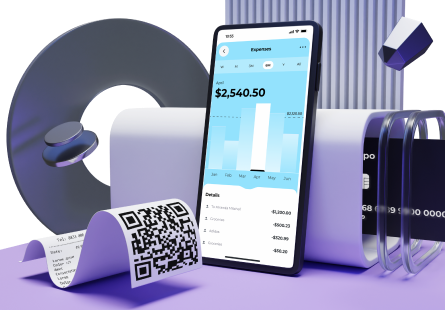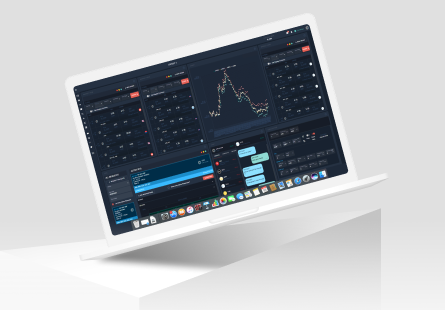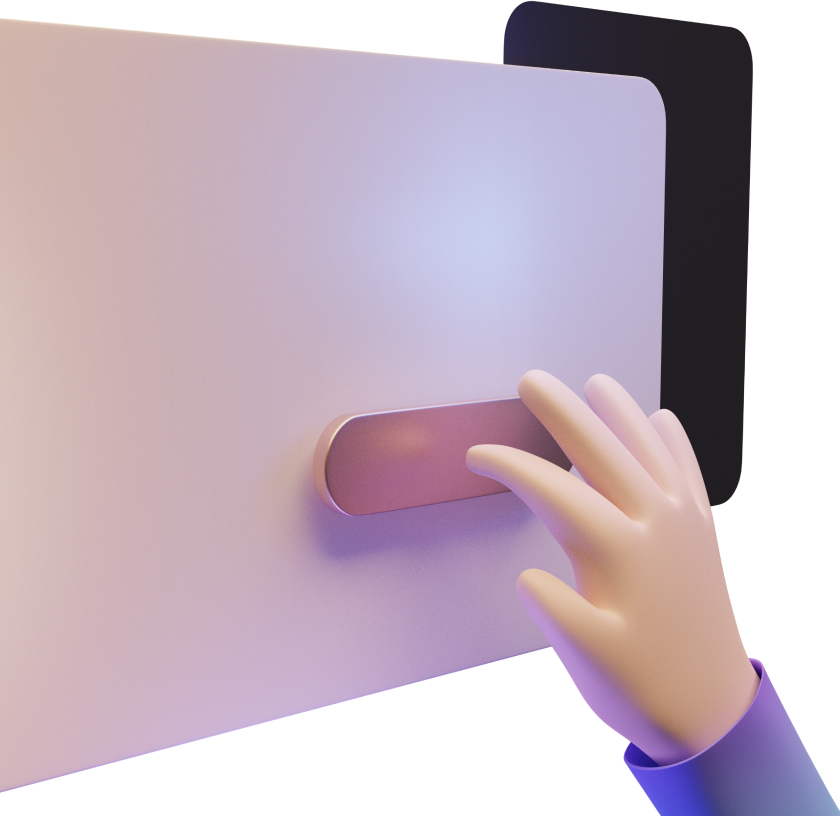Fierce competition within the financial sector combined with rapidly changing customer demands make it impossible to build a successful fintech solution based on mere assumptions. No matter how exciting your idea may sound, you can’t be sure that your app will appeal to people and drive the desired downloads and revenue.
Many fintech startups fail just because they skip an optional but absolutely critical step – the discovery phase. As a fintech software development company with decades of experience building complex financial solutions, we strongly recommend conducting a discovery phase before committing to development. Besides saving you costs and time, it allows you to build a product that meets market demands.
In this guide, we’re sharing our practical knowledge about the discovery phase, including best practices and ways to solve major challenges, so let’s dive in.
Understanding the discovery phase
A discovery phase is the initial stage of software development, where a team gathers information to get a solid understanding of the customer’s industry, their business, and the future product’s target market. The discovery phase provides a development team with valuable insights about customer expectations and user needs and translates them into technical requirements.
The discovery phase deliverables usually include but are not limited to software requirements specification (SRS), a preliminary UX prototype, a software development roadmap, cost estimates, and a discovery phase proposal.
While the discovery phase is optional, overlooking it can adversely affect your project’s success, especially when talking about fintech projects that require substantial investments and time.
Let’s look at the key reasons why the product discovery phase is so critical in fintech app development:
- It allows you to determine the project scope, goals, features, user needs, and regulatory requirements early on, resulting in a focused development process.
- A discovery phase enables the design team to make data-driven design decisions rather than relying on assumptions.
- It enables you to select the right technology stack to maximise the success of project outcomes.
- Conducting a discovery phase can help you achieve a higher ROI. With clear project goals and requirements at hand, you’re more likely to build a user-oriented product without the need to make costly changes in the further stages of the development process.
To sum up, the importance of the project discovery phase in software development shouldn’t be underestimated. Blurred goals and requirements can result in constant changes and extra costs, while a lack of accurate estimates can lead to continuous project delays. What is even worse, by skipping the discovery stage, you risk getting a fintech app that doesn’t meet user expectations, wasting both time and money.
Key components of the discovery phase
The discovery process encompasses several key stages, each with its own goal and specific outcomes. Of course, the approach to product discovery can vary across different developers. Here’s what the discovery phase at our fintech software development company looks like.
Market research
We always start by conducting a comprehensive market analysis to get a deep understanding of the current market landscape and identify potential opportunities, challenges, and trends. This allows us to design and build a fintech product that aligns with market demands and remains competitive. This project discovery stage consists of the following steps:
Industry analysis
We analyse current trends and review possible changes in regulatory requirements within the fintech industry. An in-depth industry analysis enables us to spot opportunities for innovation and develop a product that aligns with market needs.
Audience research
Next, we identify your target users and study their needs, behaviours, and preferences through data analysis and direct engagement. A fintech app tailored to your potential users’ specific pain points translates to greater user satisfaction and a higher ROI.
Competitor analysis
We wrap up market research by conducting competitor analysis. Here, we study the strengths, weaknesses, and market positioning of the products other fintech companies offer. We identify market gaps and determine where your competitors fall short. These insights help us identify opportunities on how to differentiate your product and come up with a strong USP to give your app a competitive edge.
User research
Based on the findings from the audience analysis, we conduct user research, which lets us understand how an individual user would interact with the future product and create a design that meets their needs and offers a seamless user experience. The user research process encompasses the next steps:
Conducting surveys and interviews
Our product team follows a highly effective approach that combines surveys and interviews, which provides us with a strong understanding of your users. A direct engagement with users enables us to make more informed decisions about the design, resulting in a better user experience and, ultimately, a more successful product.
Creating user personas
Developing user personas helps us build fintech apps with a specific target user in mind rather than a generic one. Essentially, we create representations of real customers based on the data collected from surveys and interviews. User personas act as a guide throughout the design and development process, helping ensure that the final product caters to real user needs.
User journey mapping
Finally, we work closely with our clients to visualise the entire process users would go through when interacting with the product, from start to finish. Mapping the user journey helps us identify areas for improvement and create a seamless user experience.
Ideation and concept validation
This part of the discovery phase focuses on generating ideas and confirming that the product concept resonates with potential users and meets their needs. In fintech app development, this stage usually involves the following tasks:
Brainstorming sessions
Here, cross-functional teams, including designers, software developers, and product managers, closely collaborate to generate ideas for the future product. Then, the ideas are assessed based on their feasibility, impact, alignment with business goals, user needs, and other criteria in order to identify the most promising concepts. The top ideas are further developed and refined.
Prototyping
Next, we build low-fidelity prototypes to visualise the selected concepts. These prototypes allow stakeholders to test the ideas in a hands-on manner. Their honest feedback provides valuable insights into how we can refine the product before the client commits significant resources.
Feasibility studies
Lastly, our product team conducts thorough feasibility assessments to evaluate the technical, financial, and operational viability of the concepts. Feasibility studies allow us to check whether the ideas are realistic and sustainable in the long term.
Regulatory and compliance considerations
The financial sector is one of the most heavily regulated areas. Among other requirements, regulators demand that fintech services providers protect the sensitive data of users. It’s critical to properly research the regulatory landscape before starting your fintech project to ensure regulatory compliance and avoid possible legal issues in the future. This stage of the discovery phase involves:
Studying legal requirements
We research regulations that apply to your target markets, including industry-specific laws, data protection regulations (such as GDPR or CCPA), financial regulations, and any licensing requirements necessary for operating within the financial technology sector. This allows us to ensure compliance from the outset and build trust with users by demonstrating a commitment to data security.
Risk management
In addition, we evaluate potential regulatory, operational, technological, and market risks and develop strategies to mitigate them. This typically involves creating contingency plans, implementing security measures, and establishing protocols for regular compliance audits.
Best practices for a successful discovery phase
As a fintech development company with 20+ years in the business, we realise the importance of the discovery phase in building fintech solutions. When conducting a discovery phase, we follow the tried-and-true tactics that have helped us ensure high-quality discovery phase deliverables for our numerous clients.
Collaborative approach
It’s important to involve stakeholders from various departments – product, design, engineering, marketing, and legal – to get a comprehensive understanding of the product requirements and constraints. This enables teams to identify potential challenges, align their objectives, and come up with a product vision that meets both business goals and user needs.
Continuous user involvement
User interviews, focus groups, and usability testing provide insights that let us validate assumptions and refine concepts based on real-world customer feedback. When you keep the user at the centre of the development, you increase the chances of the final product being both functional and aligned with user expectations, leading to higher user satisfaction and adoption rates.
Data-driven decision-making
Fintech apps require substantial time and resources, and this is not the case where you can play a guessing game. Your decisions should be supported by data analytics. Analysing data on user behaviour, market trends, and competitor performance helps prioritise features and discover opportunities to differentiate your product.
Iterative process
An iterative approach involves breaking down the discovery phase into smaller, manageable cycles and making adjustments and improvements based on feedback. This helps product teams achieve more refined deliverables.
Clear documentation
Discovery documentation can include everything from meeting notes and user feedback summaries to design specifications and technical requirements. It’s critical to keep clear and detailed documentation, as it serves as a reference point for all stakeholders and helps maintain continuity throughout the entire software development process.
Challenges and solutions
In fintech software development, the discovery phase is a complex process that comes with some specific challenges. Here are the most common ones, along with the proven ways to handle them.
Ambiguity and uncertainty
Ambiguity and uncertainty are the most significant challenges during the discovery phase, as vague requirements and unclear user needs complicate the process of defining product vision.
Solutions:
- conducting user interviews, surveys, and focus groups
- creating user personas
- using hypothesis-driven methodologies
- openness to pivoting based on new insights
Stakeholder alignment
A discovery phase suggests fruitful collaboration of different departments, including designers, marketers, and the development team, who see the project from absolutely different perspectives.
Solutions:
- regular communication
- involving stakeholders in key decision points
- creating a shared document outlining the project’s objectives
Resource constraints
Limited resources – whether you mean time, budget, or team members – can create a significant challenge during the discovery phase.
Solutions:
- prioritising tasks and focusing on those that drive the most value
- implementing agile methodologies
Summary
It’s safe to say that the discovery phase is crucial if you plan for success. Among other insightful deliverables, knowing the needs of your target users and the weaknesses of your competitors can go a long way towards creating a successful product.
DeepInspire offers discovery phase services for product development to help you maximise the potential of your project, minimise risks, and create a solid foundation for building a high-converting and compliant product.







